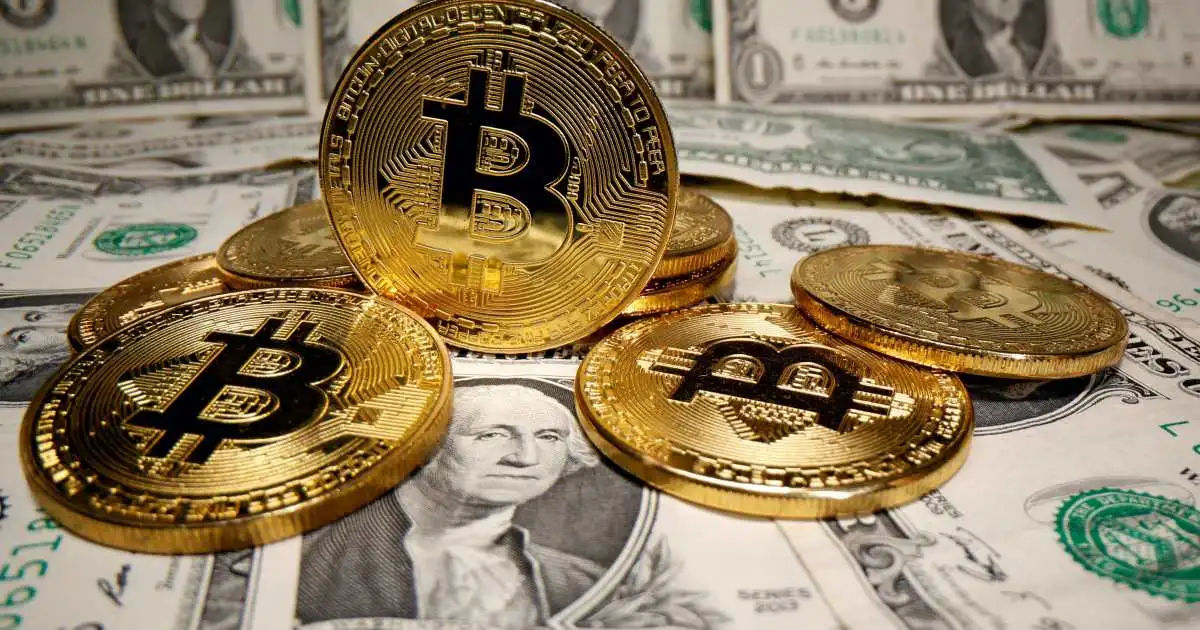Could Stablecoins Strengthen the US Dollar and Challenge Bitcoin’s Dominance?
12.12.2024 10:30 1 min. read Alexander Stefanov
A recent analysis by Citi experts suggests that while stablecoins are reinforcing the dominance of the US dollar, they are also challenging the idea that Bitcoin could eventually dethrone the dollar as the global reserve currency.
Citi’s report points out that cryptocurrencies like Bitcoin were initially seen as alternatives to central bank-issued money, with some even speculating that Bitcoin could end the US dollar’s reign. However, the rise of stablecoins, which now make up the majority of cryptocurrency trading, is challenging this assumption.
The majority of stablecoins are tied to the US dollar, with their issuers maintaining reserves in US dollars and US Treasury bonds. Citi argues that as stablecoins gain more regulatory clarity and legitimacy, they could further cement the dollar’s global standing rather than replacing it.
According to the analysts, as regulations surrounding stablecoins become clearer, the demand for US Treasury bonds by stablecoin issuers may increase significantly. In fact, they suggest that stablecoins could make the US dollar even more accessible internationally, enhancing its dominance in the global economy.
The report also notes that stablecoin usage is expected to hit unprecedented levels in early 2024, with a projected $5.5 trillion in transactions—surpassing Visa’s $3.9 trillion for the same period.
-
1
Public Companies Outpace ETFs in Bitcoin Buying: Here is What You Need to Know
02.07.2025 12:30 2 min. read -
2
Crypto Inflows hit $1B Last Week as Ethereum Outshines Bitcoin in Investor Sentiment
07.07.2025 20:30 2 min. read -
3
Robert Kiyosaki Buys More Bitcoin, Says He’d Rather Be a ‘Sucker Than a Loser’
02.07.2025 22:00 1 min. read -
4
This Week in Crypto: Whale Accumulation, Ethereum Signals, and a Sentiment Shake-Up
05.07.2025 21:00 3 min. read -
5
BlackRock’s IBIT Bitcoin ETF Surpasses 700,000 BTC in Record Time
08.07.2025 19:00 2 min. read
Weekly Crypto Roundup: Bitcoin Hits ATH, Ethereum Surges, Trump Advances Crypto Reforms
Analyzing the latest updates shared by Wu Blockchain, this past week underscored a pivotal shift in the crypto landscape. Bitcoin surged to a new all-time high of $123,226, pushing the overall crypto market cap beyond $4 trillion—a milestone reflecting renewed investor confidence and accelerating institutional flows.
Over $5.8 Billion in Ethereum and Bitcoin Options Expired Today: What to Expect?
According to data shared by Wu Blockchain, over $5.8 billion in crypto options expired today, with Ethereum leading the action.
IMF Disputes El Salvador’s Bitcoin Purchases, Cites Asset Consolidation
A new report from the International Monetary Fund (IMF) suggests that El Salvador’s recent Bitcoin accumulation may not stem from ongoing purchases, but rather from a reshuffling of assets across government-controlled wallets.
Ethereum Sparks Altcoin Season as FOMO Shifts Away From Bitcoin
Traders are rapidly shifting their focus to Ethereum and altcoins after Bitcoin’s recent all-time high triggered widespread retail FOMO.
-
1
Public Companies Outpace ETFs in Bitcoin Buying: Here is What You Need to Know
02.07.2025 12:30 2 min. read -
2
Crypto Inflows hit $1B Last Week as Ethereum Outshines Bitcoin in Investor Sentiment
07.07.2025 20:30 2 min. read -
3
Robert Kiyosaki Buys More Bitcoin, Says He’d Rather Be a ‘Sucker Than a Loser’
02.07.2025 22:00 1 min. read -
4
This Week in Crypto: Whale Accumulation, Ethereum Signals, and a Sentiment Shake-Up
05.07.2025 21:00 3 min. read -
5
BlackRock’s IBIT Bitcoin ETF Surpasses 700,000 BTC in Record Time
08.07.2025 19:00 2 min. read


